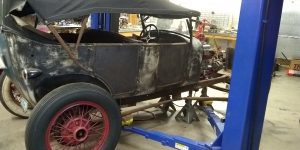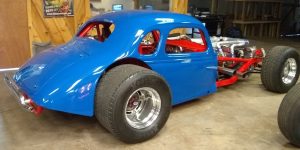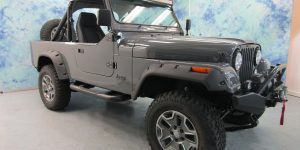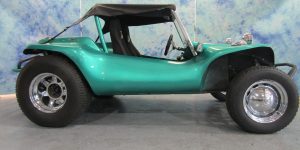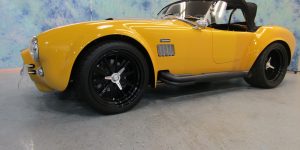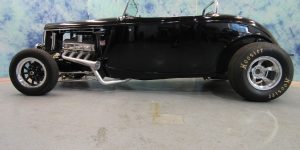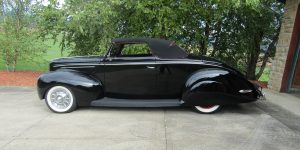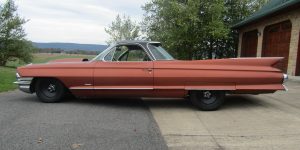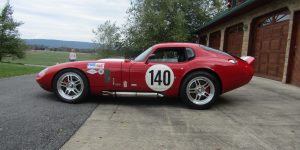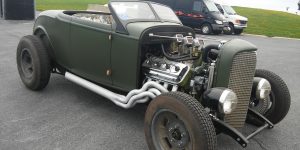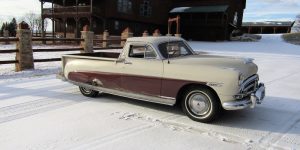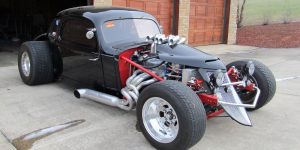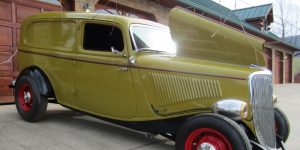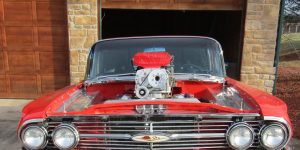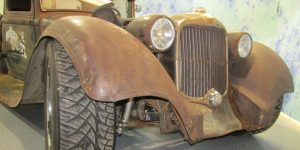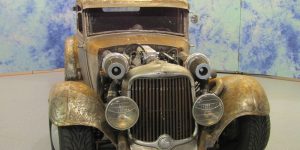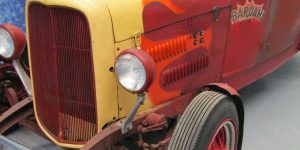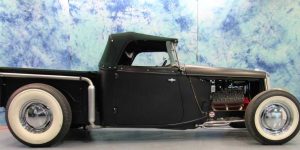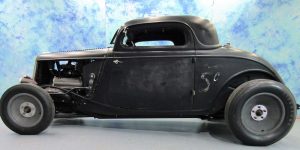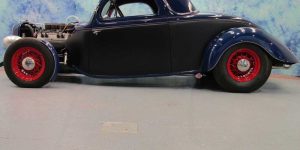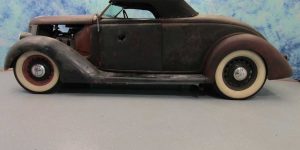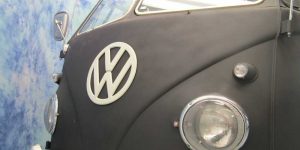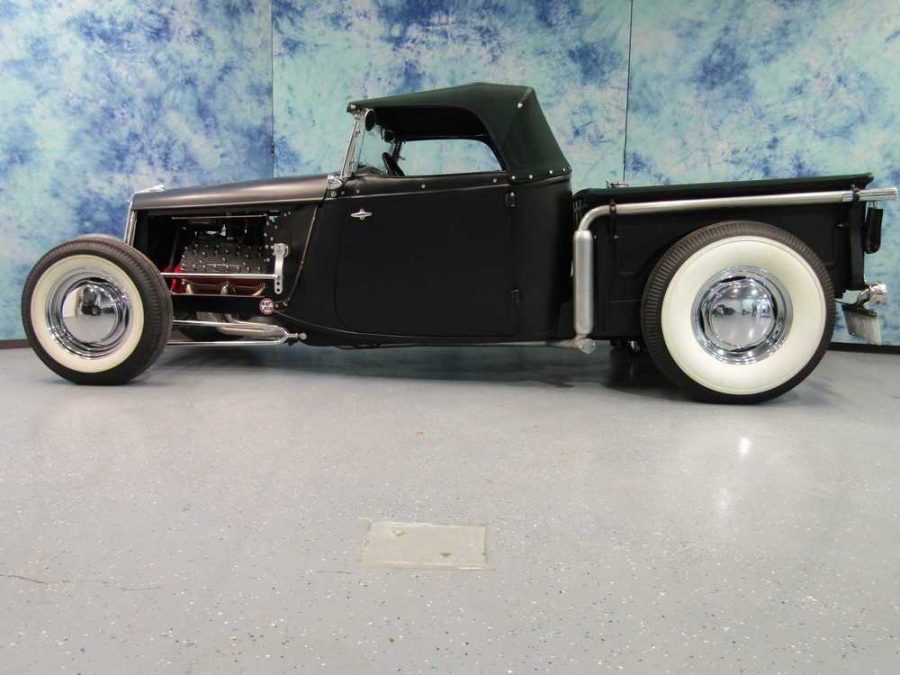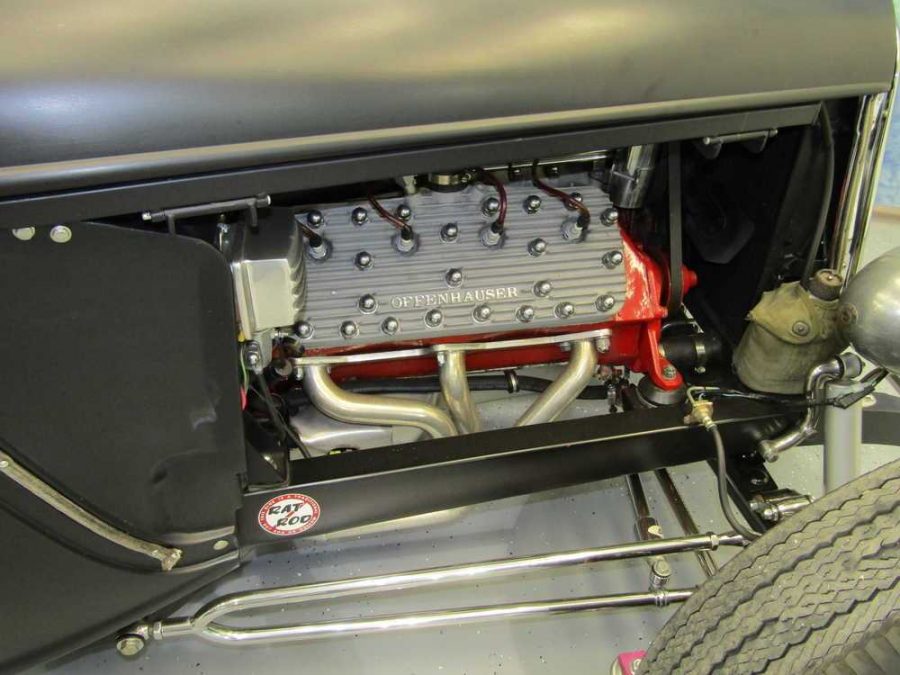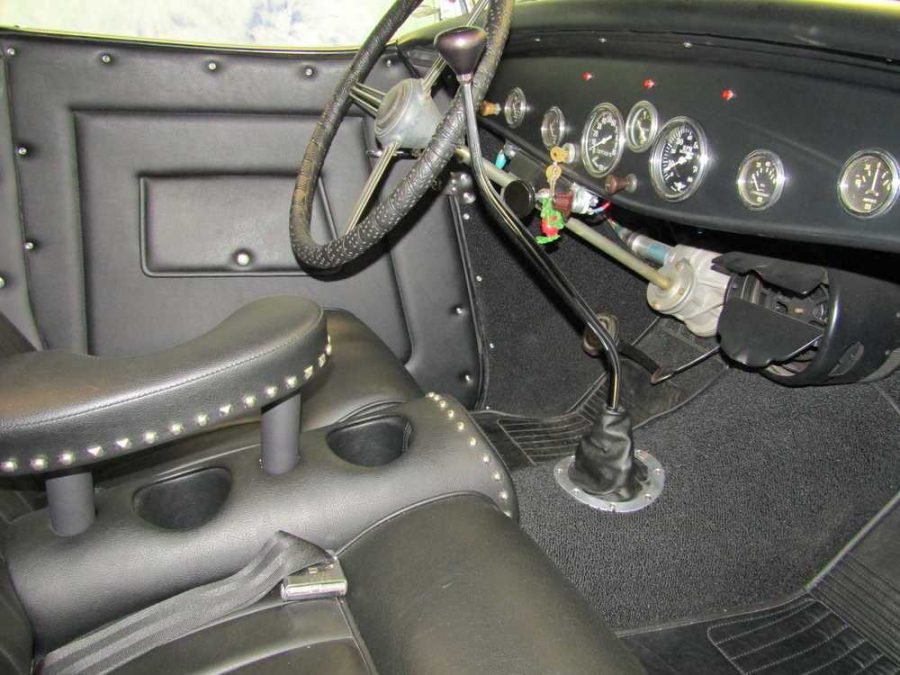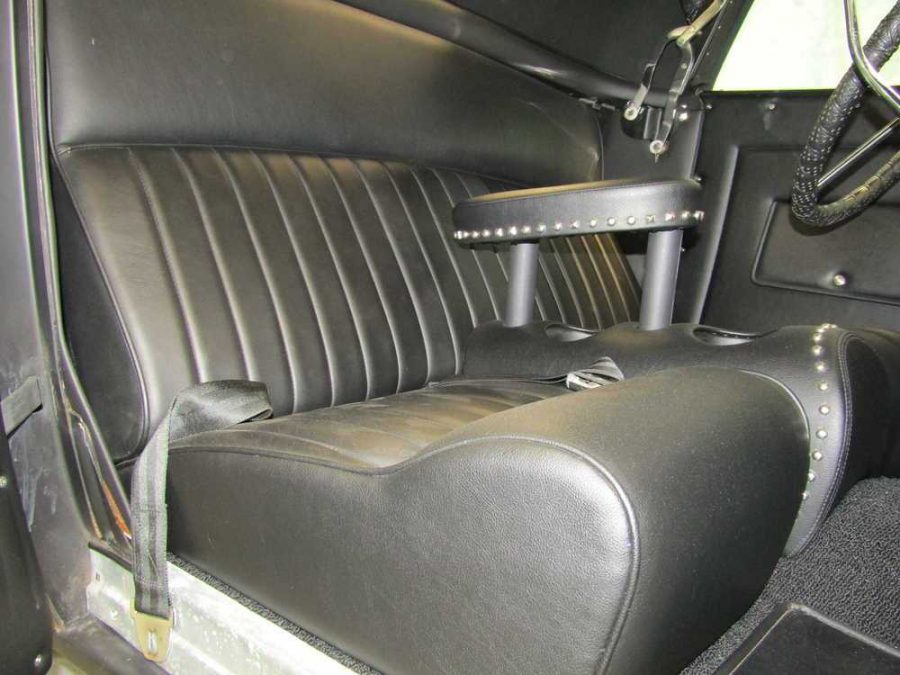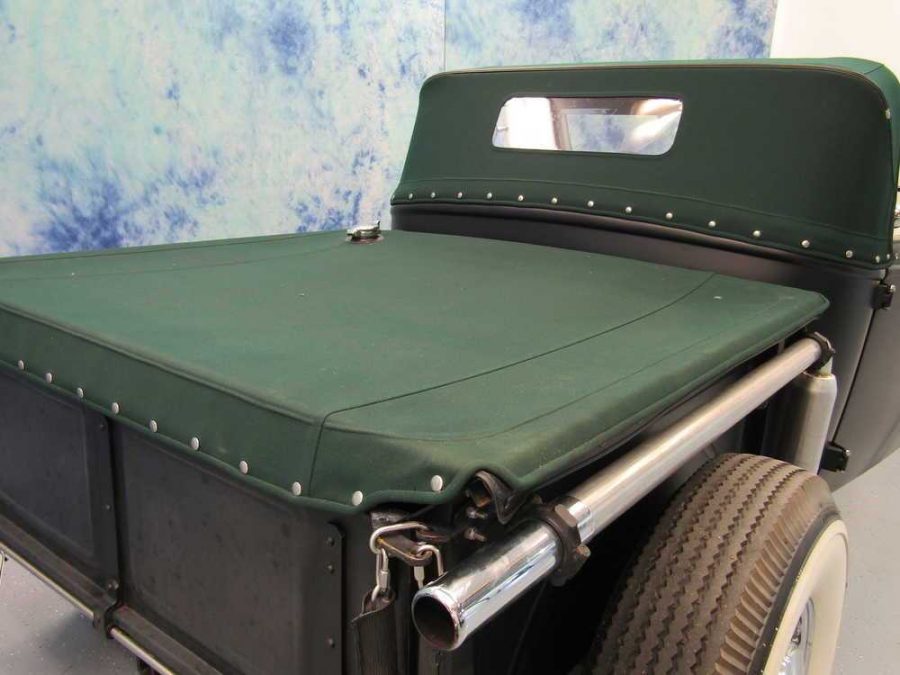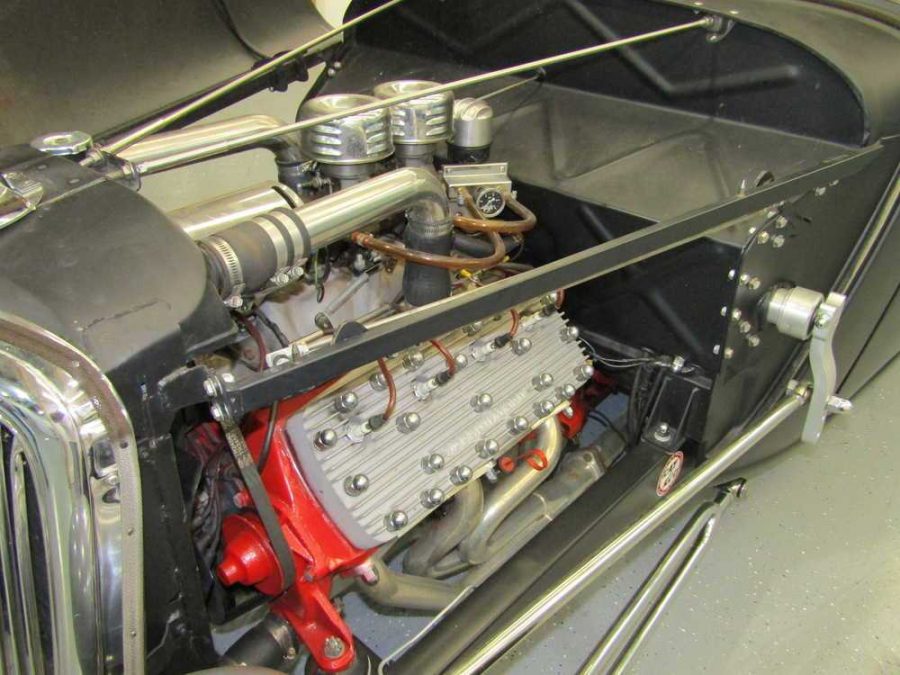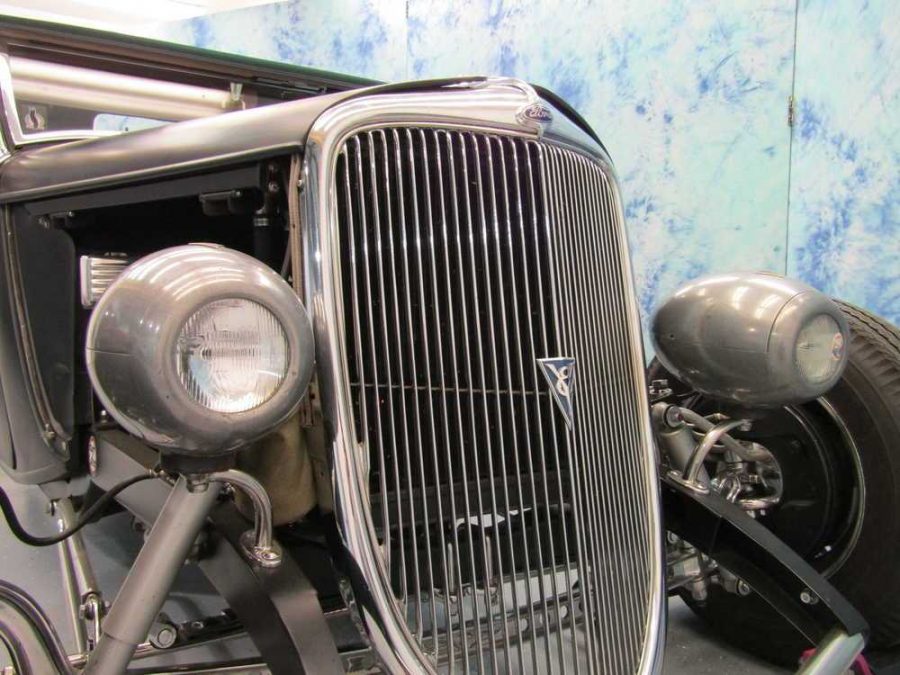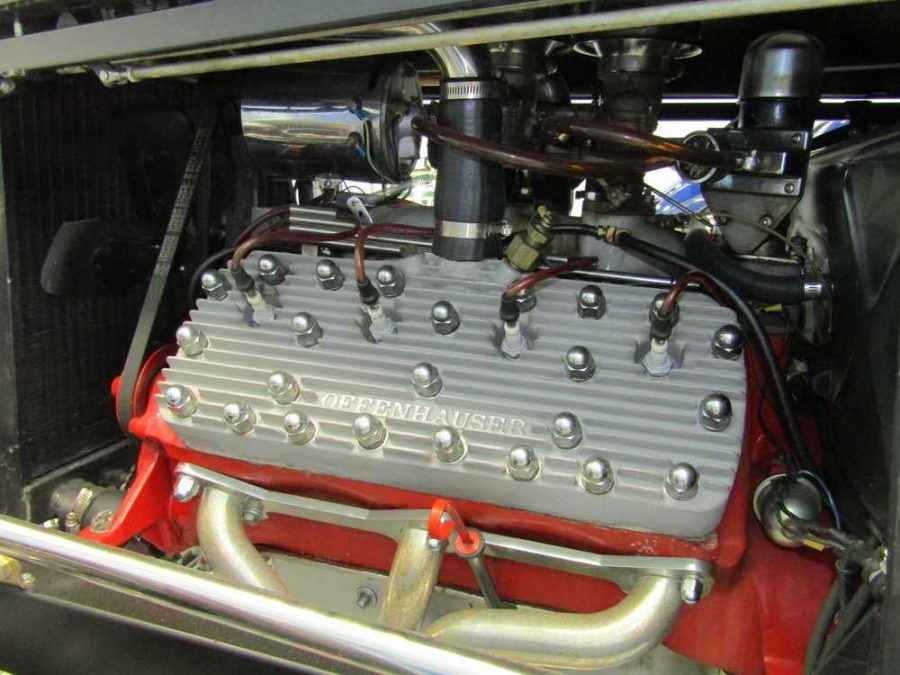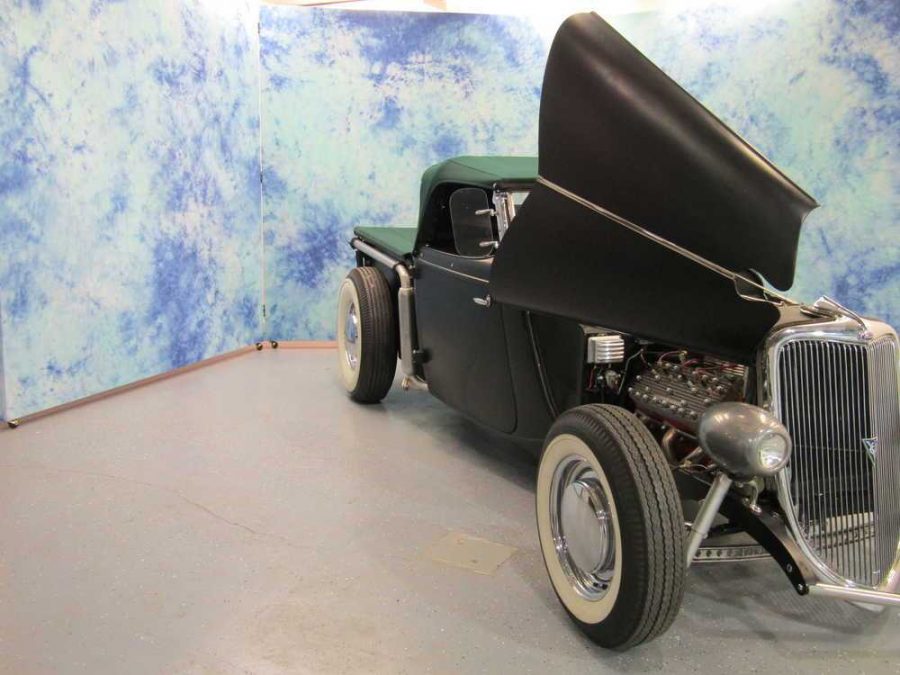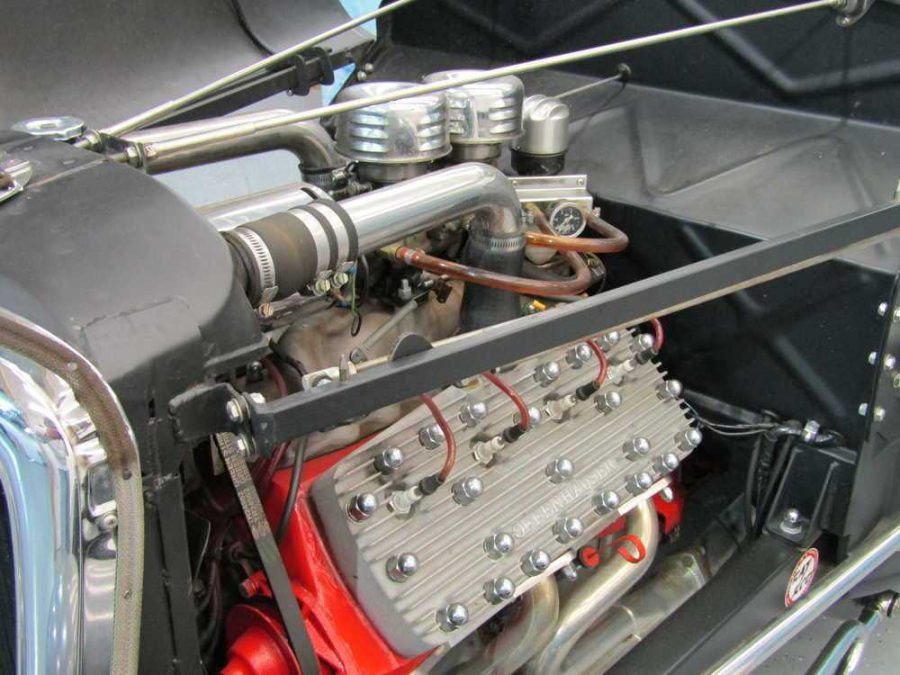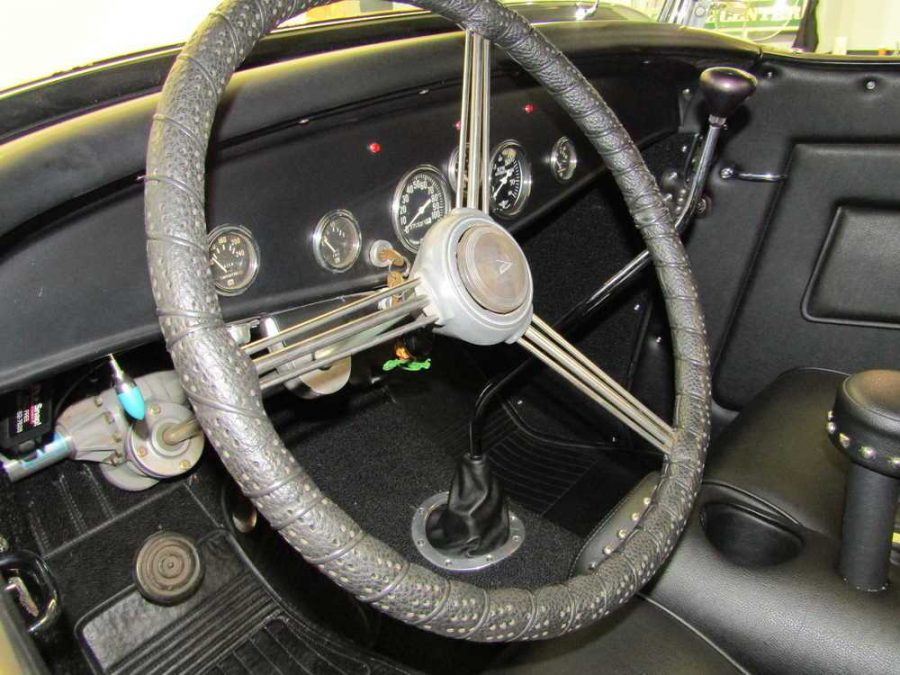1934 FORD ROADSTER PICK-UP
For the 1932 model year, Ford introduced a revised version of the Model A. The Model B was introduced with a modernized power-train and chassis and slightly restyled bodywork. Only five years removed from the last Model T, the Model B introduced Ford and the entire automotive industry to yearly changes for model styling. In 1933, the exterior was redesigned while the 1934 wore a new front end of its own; all three versions rode on the same basic chassis.For 1932, Ford introduced an option that would remain in the full-size Ford line for seven decades. Developed as a response to the 1929 introduction of the Chevrolet "Stovebolt Six", the Model 18 offered a 65-hp V8 engine for a $10 price premium over the standard Model B. Demand for the V8 was so strong that Ford struggled to keep up. After 1934, the 4-cylinder engine was discontinued; the next 4-cylinder Ford in North America would be the Pinto in 1971
In the early 1950s, many hot-rodders could not afford to purchase and modify even a "cheap" flathead V-8, and a large investment in machine work and aftermarket parts was necessary to bring a Ford flathead V-8 to even the performance levels of most stock OHV V-8s available at the time. Even many inline six-cylinder engines from that period could be modified to produce more reliable and practical power than Ford V-8s, as the Ford flathead V-8 is saddled with many design features that make modifying it for true high-performance use difficult and expensive compared with other V-8s.
As modern OHV V-8s became available and affordable in salvage yards, the Ford flathead V-8 rapidly disappeared from the hot-rodding scene. Hot-rodding in general moved away from the salvage-yard car builds as parts and labor became more expensive and many hot-rod shops priced themselves out of business. The modern OHV V-8 powered vehicles available also contributed to the demise of hot-rodding's original culture (affordable modifications by working-class car owners), as new factory cars became capable of much higher performance than most hot-rods.
Today the flat-head Ford is mainly used in "retro" hot-rod builds by builders more interested in a retro vibe and recreating history than performance. Even 4-cylinder Ford engines are used to make a retro hot-rod "correct".
Details
- Price: $50,000
- Engine: FLATHEAD
- Transmission: AUTO C5
- Color: DENIM BLACK
- Interior: BLACK
- VIN: 40750l0063

